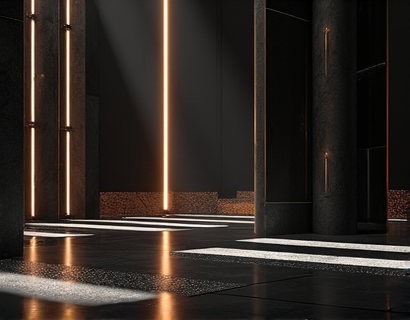Mastering the Art of Knitting: Expert Insights for All Skill Levels
In the world of knitting, whether you are a seasoned pro or just starting out, finding reliable and expert advice can make all the difference. The art of knitting, with its rich history and endless possibilities, continues to captivate enthusiasts of all ages. This article delves into the realm of expert knitting insights, providing a comprehensive resource for knitters at every stage of their journey. From beginner basics to advanced techniques, this guide aims to enrich your knitting experience with verified information and specialized advice.
Understanding the Basics: A Foundation for All Knitters
For those new to knitting, understanding the fundamental techniques is crucial. The first step is learning the two basic stitches: the knit stitch and the purl stitch. The knit stitch is the foundation of most knitting projects, creating a smooth and even fabric. To execute a knit stitch, hold the yarn in your hand opposite your dominant hand, insert the right needle into the first stitch on the left needle from left to right, and wrap the yarn around the right needle from left to right. Pull the loop through the stitch and slide the old stitch off the left needle, leaving the new stitch on the right needle.
The purl stitch, often described as the reverse of the knit stitch, adds texture and depth to your work. To purl, hold the yarn in front of your dominant hand, insert the right needle into the first stitch on the left needle from right to left, and wrap the yarn around the right needle from right to left. Pull the loop through the stitch and slide the old stitch off the left needle, again leaving the new stitch on the right needle. Combining these two stitches allows you to create a variety of patterns and textures.
Another essential concept is gauge, which refers to the number of stitches and rows per inch in your knitting. Maintaining the correct gauge ensures that your project fits and looks as intended. To find your gauge, knit a swatch using the recommended needle size and yarn, then measure the number of stitches and rows within a 4-inch square. Adjust your needle size if necessary to match the gauge specified in your pattern.
Advanced Techniques: Elevating Your Knitting Skills
As you gain confidence and experience, you'll want to explore more complex techniques to elevate your projects. One such technique is cable knitting, which creates intricate twists and turns in your fabric. Cable knitting requires a cable needle and a specific cable pattern. To begin, knit the first few stitches, then transfer them to the cable needle, holding it in the front or back of the work depending on the desired effect. Continue knitting until you reach the point where you need to work with the cables, then knit the stitches back onto the left needle, including those on the cable needle.
Another advanced technique is lace knitting, known for its delicate and airy appearance. Lace knitting involves creating openwork patterns using yarn overs and decreases. Yarn overs increase the number of stitches by looping the yarn over the needle and pulling a new loop through. Decreases, such as knitting two stitches together or slip, slip, knit (ssk), reduce the number of stitches to shape your work. Combining these techniques allows you to create intricate lace patterns in your projects.
Increasing and decreasing stitches are fundamental for shaping your knitting. To increase, you can use methods like the knit front and back (kfb), where you knit a stitch, insert the right needle into the front and back of the same stitch, yarn over and pull through, then knit the original stitch. For decreases, the slip slip knit (ssk) method involves slipping the first two stitches knitwise, inserting the left needle into the front of both, and knitting through the back loop to complete the decrease.
Choosing the Right Materials: Yarn and Needles
The choice of yarn and needles significantly impacts the outcome of your knitting project. Yarn comes in various fibers, weights, and colors, each offering unique characteristics. Natural fibers like wool and cotton provide warmth and breathability, while synthetic fibers such as acrylic offer durability and ease of care. The weight of the yarn, measured in terms like fingering, sport, worsted, and bulky, affects the thickness and texture of your finished piece. Selecting the appropriate weight for your project ensures the right balance between detail and practicality.
Needles come in different materials, sizes, and tip types, each suited for specific tasks. Metal needles are durable and slide easily, making them ideal for general knitting. Wood and bamboo needles are softer and can be better for delicate yarns, reducing the risk of snagging. Circular needles are versatile for projects with no beginning or end, while straight needles are better for flat work. The size of the needle should match the yarn weight; larger needles are used for bulkier yarns, and smaller needles for finer yarns. Always check the pattern for recommended needle sizes to achieve the desired gauge.
Project Planning: From Concept to Completion
Before diving into a new knitting project, thorough planning is essential. Start by selecting a pattern that suits your skill level and desired outcome. Read through the entire pattern to understand the steps involved, including any specific techniques or materials required. Make a list of needed supplies, including yarn, needles, and any additional tools like stitch markers or a tape measure.
Creating a knitting schedule can help you manage your time and stay on track. Break down the project into manageable sections, setting realistic goals for each session. This approach not only makes the project less daunting but also allows you to track your progress and adjust as needed. Regularly checking your work against the pattern ensures accuracy and helps you catch any mistakes early.
Joining a knitting community, whether online or in-person, can provide valuable support and inspiration. Sharing your progress, asking for advice, and learning from others can enhance your knitting journey. Many communities offer critiques, tips, and encouragement, fostering a sense of camaraderie and shared passion.
Innovations in Knitting: Technology and Trends
The world of knitting is not static; it continues to evolve with new technologies and trends. Digital knitting machines, for instance, have revolutionized the production of knitted goods, allowing for complex designs and large-scale manufacturing. For hobbyists, electronic knitting devices like the Knit One and Knit Two offer guided knitting experiences, making it easier for beginners to learn and for experienced knitters to try new patterns.
Sustainability is another trending topic in knitting. Eco-friendly yarns made from recycled materials or sustainable fibers are gaining popularity. Knitters are also embracing the practice of upcycling, transforming old garments into new creations. This not only reduces waste but also adds a personal touch to your projects.
Fashion and knitting intersect in the rise of knitted fashion, where intricate designs and innovative techniques are used to create wearable art. Designers are pushing the boundaries of what can be achieved with knitting, incorporating elements from haute couture into everyday wear. This fusion of art and functionality inspires knitters to explore new possibilities and push their creative limits.
Educational Resources: Learning and Growth
For those eager to deepen their knitting knowledge, a wealth of educational resources is available. Online tutorials, videos, and blogs offer step-by-step guidance on various techniques and projects. Websites like Ravelry and Knitting Help provide extensive pattern libraries, forums, and tutorials, catering to all skill levels. Books on knitting, ranging from beginner guides to advanced reference books, offer in-depth information and inspiration.
Workshops and classes, both in-person and online, provide hands-on learning experiences. These sessions often include direct feedback from instructors, allowing you to refine your skills and address specific challenges. Many community centers, craft stores, and knitting guilds offer regular classes, creating a supportive environment for learning and growth.
For children and students, age-appropriate resources are crucial. Child-friendly patterns and tutorials introduce basic techniques in a fun and engaging way. Many organizations and websites offer kid-specific content, ensuring a safe and enriching knitting experience. Parents and educators can also benefit from these resources, fostering a love for knitting in the next generation.
Conclusion: Embracing the Journey
Knitting is more than just a hobby; it is a journey of creativity, patience, and self-discovery. Whether you are a beginner taking your first stitches or an experienced knitter exploring new techniques, the art of knitting offers endless opportunities for growth and enjoyment. By leveraging expert insights, educational resources, and a supportive community, you can enhance your knitting experience and achieve your full potential. Embrace the journey, and let the needles guide you to new heights.











































